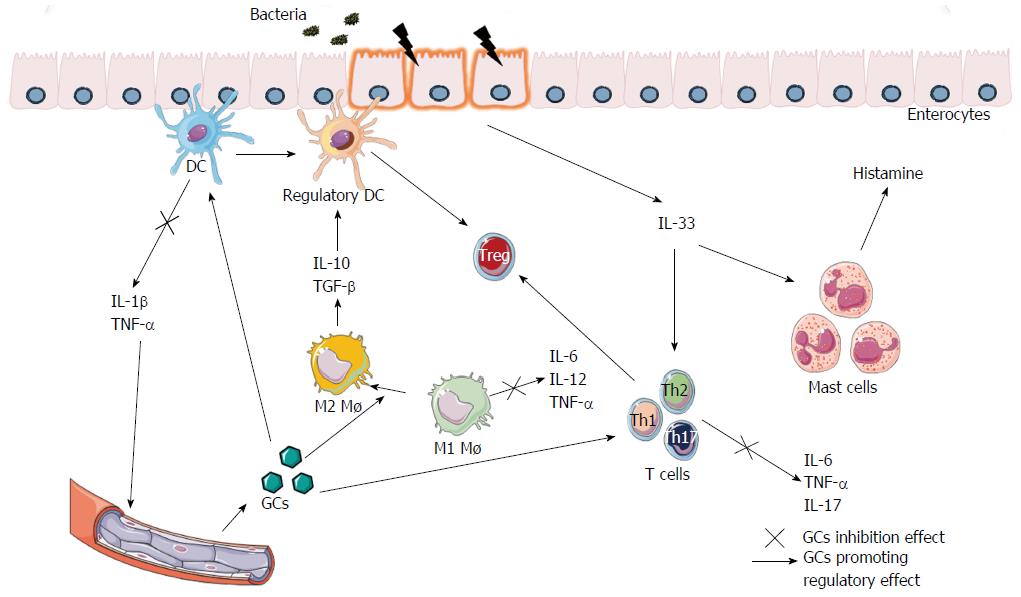Copyright
©The Author(s) 2017.
World J Gastroenterol. Sep 28, 2017; 23(36): 6628-6638
Published online Sep 28, 2017. doi: 10.3748/wjg.v23.i36.6628
Published online Sep 28, 2017. doi: 10.3748/wjg.v23.i36.6628
Figure 1 Immunologic dynamics and the responses triggered by glucocorticoids in inflammatory bowel diseases.
During activation of the immune response in inflammatory bowel diseases (IBDs), the invasion of bacteria and the cytokine cascade triggered by the disruption of the epithelial barrier prompt an inflammatory response in the intestinal mucosa. Among the different cells that participate in the pathology of IBDs, the most important are represented in this diagram. When bacterial organisms interact with dendritic cells (DC), or the intestinal epithelium is disrupted due to an inflammatory response, the production of proinflammatory cytokines and the release of DAMPs (Damaged- Associated Molecular Patterns) such as TNF-α and IL-33, respectively, is elicited. This leads to the infiltration of immune cells such as monocytes which differentiate into proinflammatory M1 macrophages (Mø) and lymphocytes T (T cells), along with mast cell activation. In the presence of glucocorticoids (GCs), the infiltrating monocytes differentiate into a regulatory M2 profile Mø and CD103+ DCs. These tolerogenic cells produce anti-inflammatory cytokines, skew the infiltrating naïve T cells toward a T regulatory phenotype, and control the inflammatory response. Also, the action of GCs blocks the production of proinflammatory cytokines by the M1 Mø, T cells and DCs, leading to the healing of the intestinal mucosa. Figure 1 was produced using Servier Medical Art from http://smart.servier.com. TGF-β: Transforming growth factor-β; IL: Interleukin.
- Citation: Dubois-Camacho K, Ottum PA, Franco-Muñoz D, De la Fuente M, Torres-Riquelme A, Díaz-Jiménez D, Olivares-Morales M, Astudillo G, Quera R, Hermoso MA. Glucocorticosteroid therapy in inflammatory bowel diseases: From clinical practice to molecular biology. World J Gastroenterol 2017; 23(36): 6628-6638
- URL: https://www.wjgnet.com/1007-9327/full/v23/i36/6628.htm
- DOI: https://dx.doi.org/10.3748/wjg.v23.i36.6628









